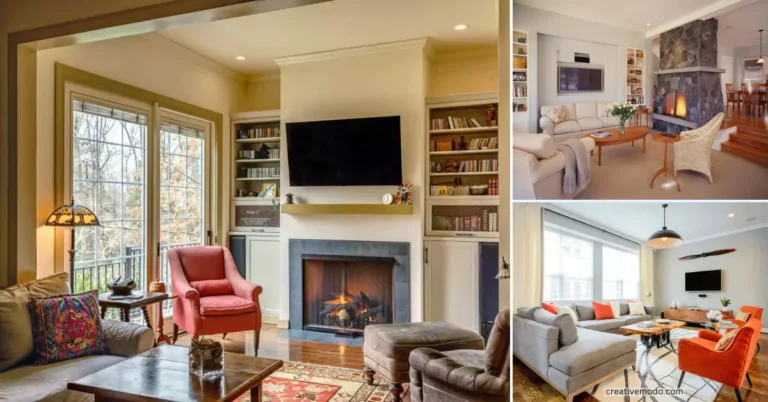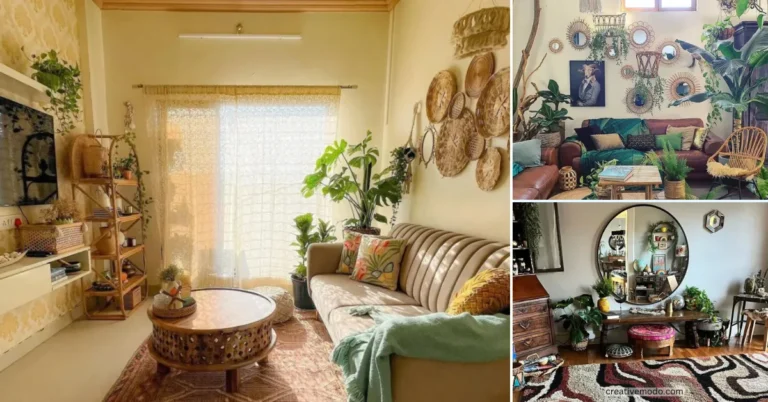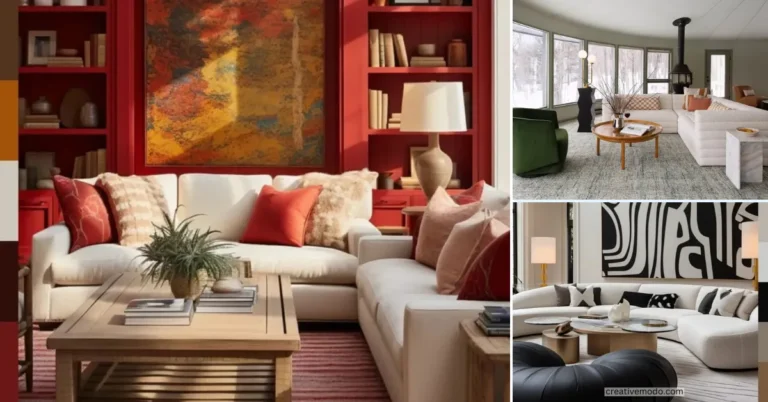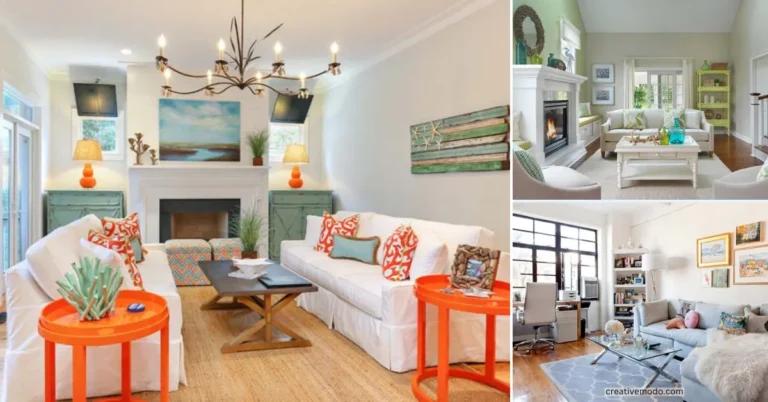How to Decorate Living Room for a Modern and Cozy Look
Decorating your living room starts with understanding the style you want and how you want the space to feel. A well-decorated living room balances comfort, function, and style by choosing the right furniture, colors, and accessories that fit your taste and needs. When you focus on layering textures and mixing materials, you create a more interesting and inviting space.
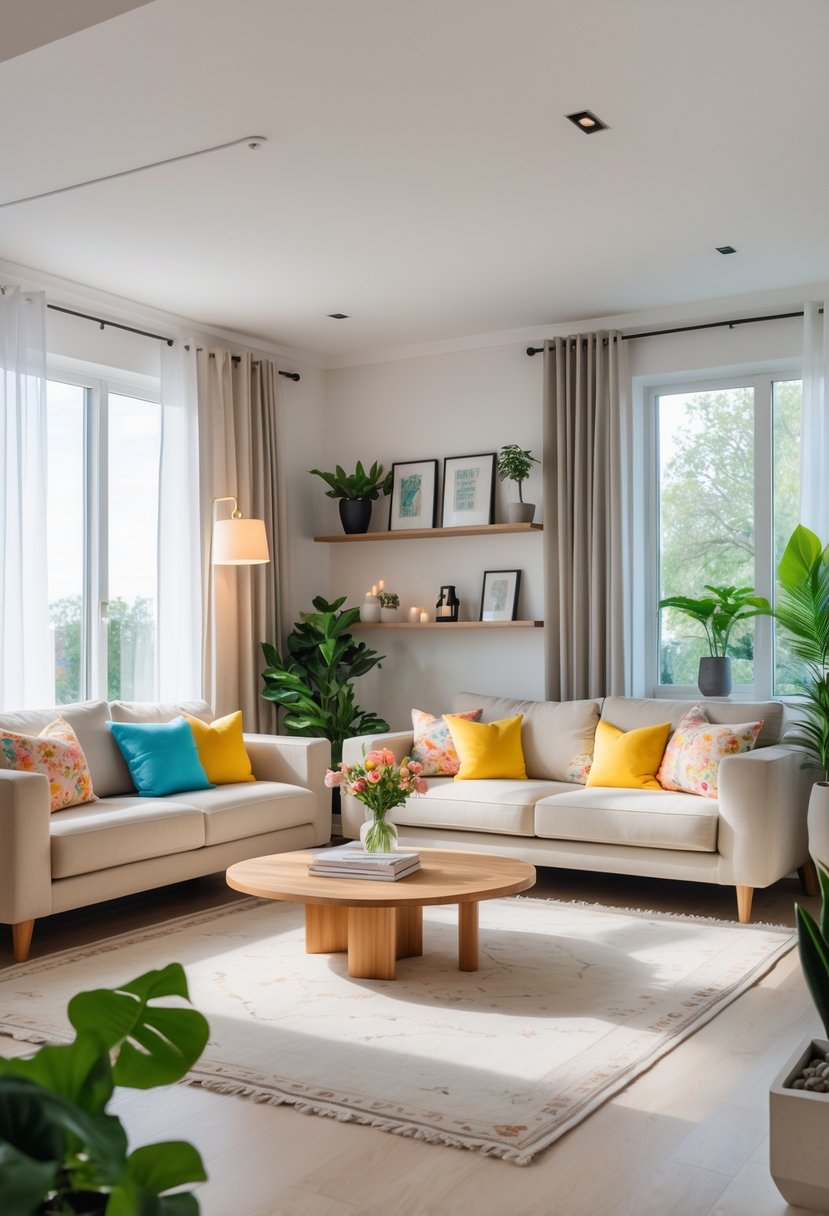
You can make your living room look more polished without spending a lot by adding simple touches like plants, throw pillows, and rugs. Thoughtful choices in lighting and art also help set the mood and highlight your style. With some planning, your living room can become a welcoming space where you enjoy spending time and sharing with others.
Key Takeways
- Decide on a style and plan your space before buying anything.
- Choose furniture and arrangement that fit your lifestyle and comfort.
- Use decor and lighting to create atmosphere and personalize the room.
Planning Your Living Room Style
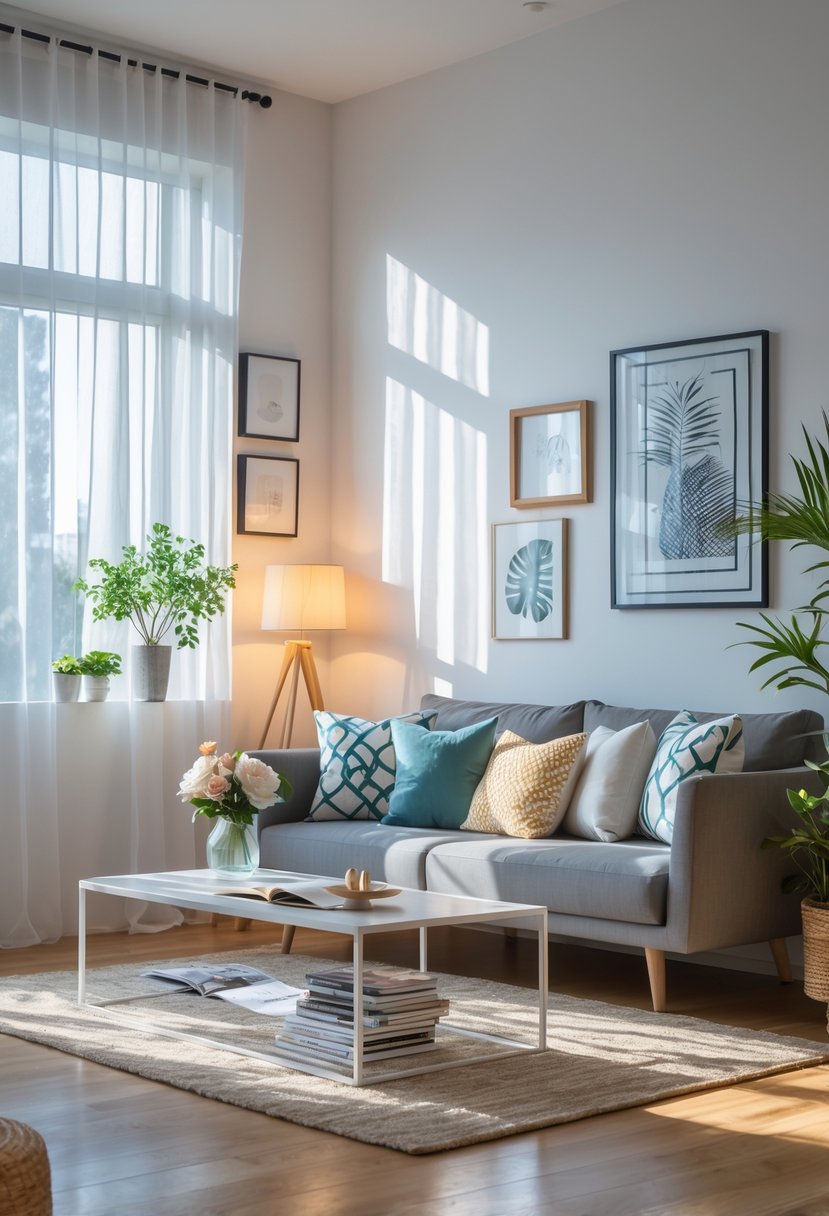
Start by understanding your room’s size, shape, and natural light. Knowing these details helps you pick the right furniture and colors to make your space work best. Next, decide on a design theme that fits your taste and lifestyle. Finally, choose colors that blend well and create the mood you want.
Assessing Space and Layout
Measure your living room carefully. Note where doors, windows, and outlets are. This helps you place furniture without blocking walkways or light.
Think about how you use the room. Do you want a spot for watching TV, reading, or socializing? Arrange seating to fit these needs with easy movement.
Use a simple sketch or an app to try different layouts. Small spaces benefit from multi-use furniture, while large rooms can handle more pieces.
Defining Your Interior Design Theme
Pick a style that matches your personality. Common options include modern, rustic, traditional, or minimalist.
Look at photos or create a mood board to narrow your choices. Focus on shapes, materials, and patterns that appeal to you.
Stay consistent. Choose furniture and decor that support the theme. For example, sleek lines and metal work well in modern styles, while wood and warm fabrics suit rustic looks.
Selecting a Cohesive Color Scheme
Limit your palette to two or three main colors to keep your room balanced. Pick a base color for walls and larger pieces.
Add accent colors through pillows, rugs, or art to create interest. Use lighter shades to make small spaces feel bigger.
Consider the room’s lighting. Natural light shows true colors, but artificial lighting can change how shades look. Test samples before buying paint or fabric.
For more on decorating your living room with clear steps, check out this guide on How to Decorate a Living Room in 14 Steps.
Choosing Furniture and Arrangements
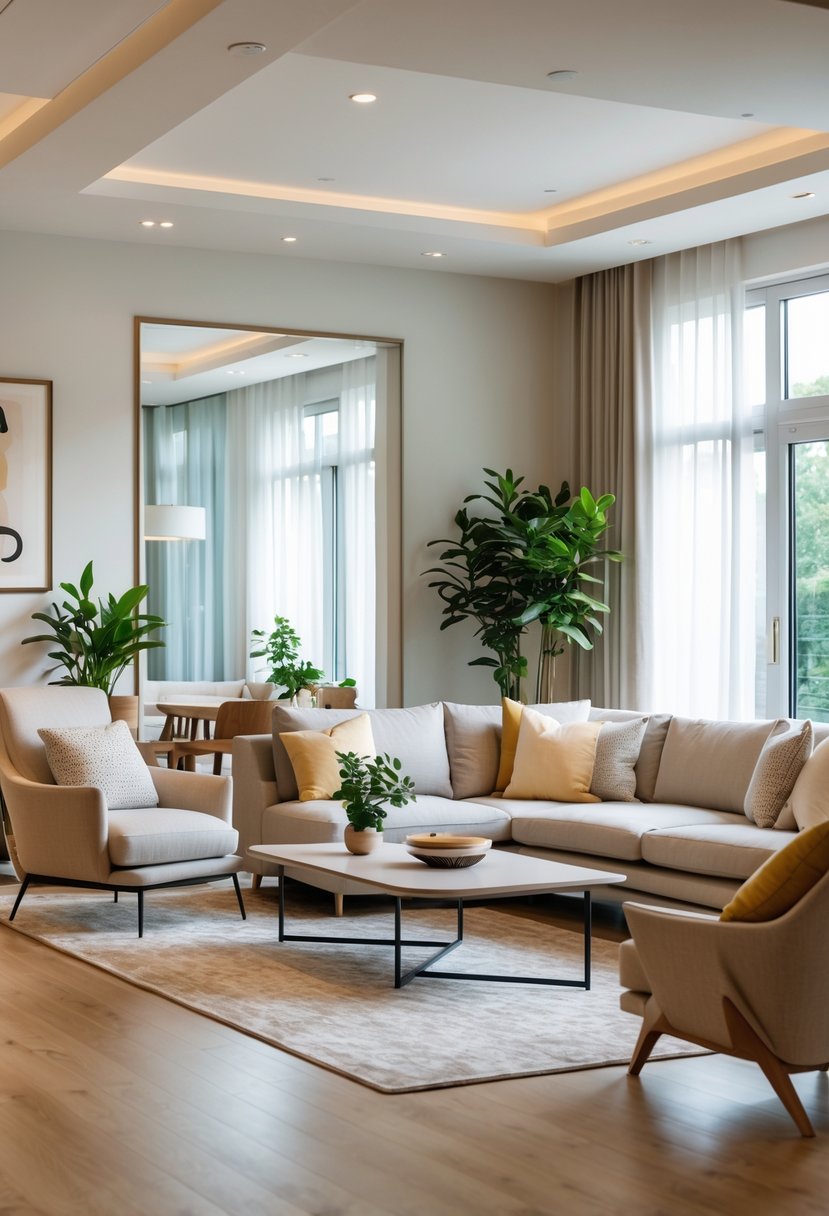
Your furniture sets the tone for your living room. Picking the right pieces and placing them thoughtfully can make your space comfortable and easy to use. Balancing style with function helps you create a room where everything has a purpose.
Selecting Suitable Furniture Pieces
Start by measuring your living room. Knowing the size helps you avoid buying pieces that are too big or too small. Choose furniture that fits the room’s scale.
Pick a sofa that matches how you use the room. If you host many guests, a large sectional works well. For smaller spaces, a loveseat or a compact sofa is better.
Mix in different types of seating, like chairs or stools, to add variety and flexibility. Choose durable materials for furniture, especially if you have kids or pets. Keep your color palette consistent to create a balanced look.
Arranging Seating for Functionality
Arrange seats so people can talk comfortably without yelling or turning awkwardly. Face chairs and sofas toward each other when possible.
Keep a good flow by leaving clear pathways. Avoid blocking doors or walkways. The arrangement should make it easy to move around the room.
Anchor the seating area with a rug that fits under the front legs of furniture. This defines the space visually. Use a coffee table or side tables for easy access to drinks and items.
Incorporating Storage Solutions
Look for furniture that doubles as storage to keep your living room tidy. Ottomans with hidden compartments or coffee tables with shelves work well.
Shelving units or built-ins can store books, decor, and electronics. Choose pieces that fit your room size and wall space.
Keep everyday items like remote controls or magazines within reach but out of sight. Baskets or decorative bins help keep clutter controlled without messing up the style.
For more ideas on furniture layout, see these living room furniture arrangement tips.
Enhancing Ambiance With Decorative Elements
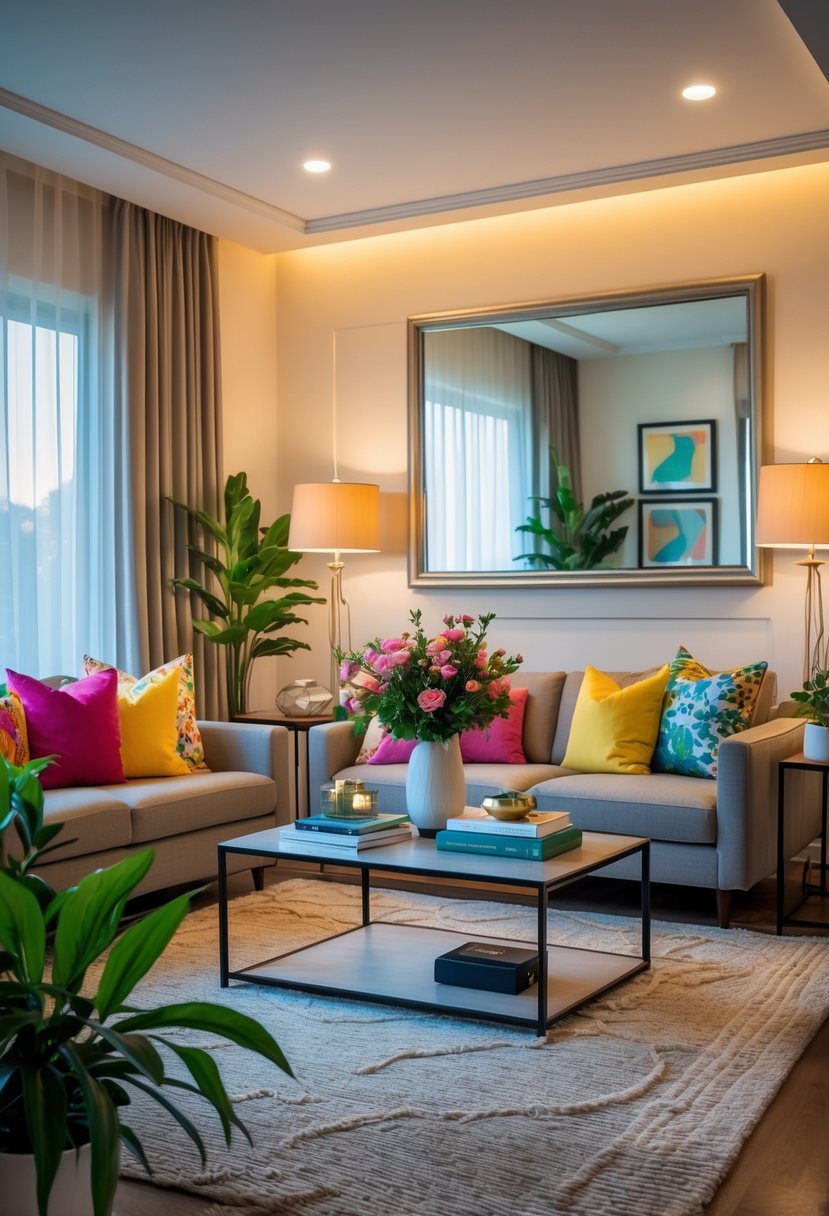
You can improve your living room’s feel by choosing the right fabrics, wall decor, lighting, and plants. These details work together to create a space that is both welcoming and comfortable for you and your guests.
Layering Textiles and Rugs
Start by adding soft textiles like throw pillows, blankets, and curtains. Use different textures such as velvet, cotton, or wool to create depth. Layering rugs with varying patterns or materials helps define areas and adds warmth underfoot.
Choose an area rug that fits your room size. It should be large enough so that furniture legs sit on it or at least touch the edges. This anchors the seating area and makes the space look complete. Textiles also help control sound, making your room feel cozy instead of echoing.
Using Wall Art and Mirrors
Wall art adds personality and creates a focal point. Pick pieces that match your color scheme and style. Group smaller art into a gallery wall for a modern look, or hang a single large piece for simplicity.
Mirrors serve a dual purpose. They reflect light to make the room appear bigger and brighter. Position mirrors opposite windows or light sources to boost natural light. Choose frames that complement your decor for a polished look.
Integrating Lighting for Atmosphere
Lighting should include layers: ambient, task, and accent. Use ceiling fixtures or recessed lights for overall illumination. Table lamps and floor lamps provide task lighting where you read or work.
Accent lighting, like wall sconces or LED strips, highlights artwork or architectural features. Dimmer switches let you adjust light levels easily, helping you set the right mood throughout the day and night.
Adding Greenery and Plants
Plants add life and color to your living room. Choose low-maintenance types like snake plants, pothos, or succulents if you have limited light or time for care.
Place plants at different heights using stands, shelves, or hanging pots to create visual interest. Greenery improves air quality and softens hard surfaces, balancing the room’s look. Use decorative pots that match your style to integrate them seamlessly into your decor.
For more ideas on bright and welcoming room designs, see this guide on how to make rooms feel alive.
Personalizing Finishing Touches

Your finishing touches should reflect your style and interests. These details bring life and personality to your living room. Focus on how you display accessories, arrange surfaces, and update items with the seasons.
Showcasing Decorative Accessories
Choose accessories that tell your story, such as travel souvenirs, family photos, or art pieces.
Group items in odd numbers for balance, like a set of three or five objects. Use trays or small boxes to keep collections tidy.
Vary heights and textures. Combine tall vases, soft fabrics, and smooth ceramics to maintain visual interest.
Place accessories where they catch the eye without cluttering. The mantel, side tables, and shelves work well.
Styling Coffee Tables and Shelves
Your coffee table can be a centerpiece that mixes function and style. Start with a stack of coffee table books related to your hobbies or favorite topics.
Add decorative objects like candles, small plants, or bowls for keys and remotes. This keeps the space practical and inviting.
Shelves let you rotate decor easily. Combine books with plants, framed photos, and art to create layers.
Use baskets or boxes on lower shelves to hide clutter while keeping things accessible.
Rotating Seasonal Accents
Change small accents to match the season. You can swap cushion covers, throws, and decorative bowls for fresh colors and textures.
In spring and summer, use light fabrics, fresh flowers, and bright colors.
In fall and winter, switch to cozy throws, warm tones, and natural elements like pinecones or dried leaves.
This rotation keeps your living room feeling updated without a full redesign each time.
For more ideas on living room styling, explore living room styling tips.
Frequently Asked Questions
You can improve your living room style without spending much money. Using plants, art, and simple design ideas can create a fresh and inviting space. Knowing how to balance modern elements and traditional warmth will help you decorate better.
What are some inexpensive ways to decorate a living room?
Look for secondhand furniture or decor at thrift stores to save money. Adding plants is a low-cost way to bring color and life to your room. Layering items like pillows and throws also adds texture without a big budget. Adding a rug that fits your furniture can update the look without spending a lot.
Which plants are best for enhancing a living room’s ambiance?
Choose low-maintenance plants like snake plants, pothos, or spider plants. They clean the air and don’t need much care. Taller plants like fiddle leaf figs make good statement pieces and add height to the space.
What are some simple yet elegant living room design strategies?
Use a neutral color palette with one or two accent tones. Keep furniture arrangement balanced for comfort and flow. Adding items in groups of three creates visual interest. Choose quality over quantity to avoid clutter.
How can one incorporate a modern aesthetic into their living room decor?
Focus on clean lines and simple shapes in furniture. Use sleek materials like metal, glass, or light wood. Limit decorative items and keep the space organized. Stick to a monochrome or muted color scheme with occasional pops of bold color.
What is the best approach to decorating living room walls with art or photos?
Group artwork in odd numbers for a natural, balanced look. Consider the size of the wall and avoid overcrowding. You can mix photos with art pieces to add personality. Personal preference guides how many walls you decorate and what style you choose.
How can I create a festive atmosphere in my living room for Diwali or similar celebrations?
Use warm, soft lighting like string lights or candles to set a cozy mood. Decorate with bright colors such as gold, red, and orange. Add traditional items like lanterns, diyas, or fresh flowers to highlight the festive spirit. Keep seating areas clear for comfortable gatherings.

